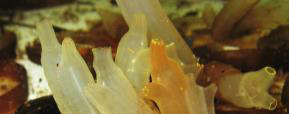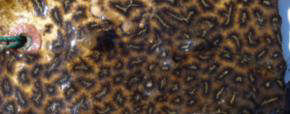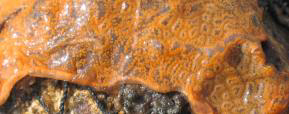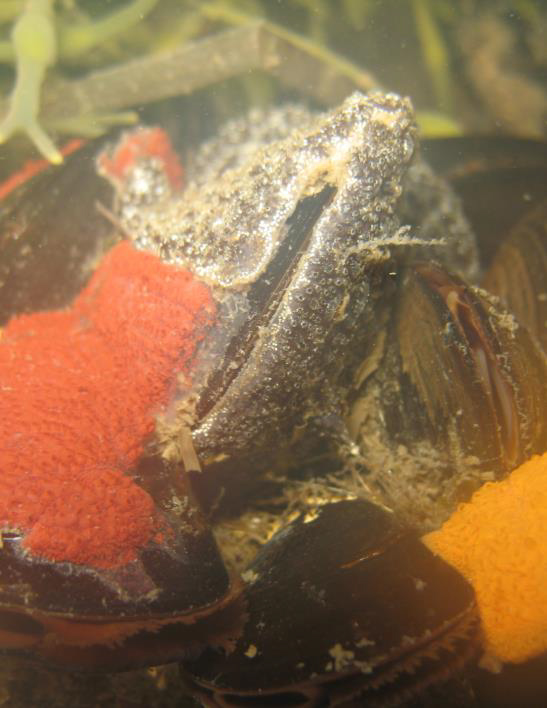Small marine, filter-feeding animals, sometimes referred to as sea squirts, live attached to underwater objects. Some, like the Vase Tunicate, grow as large solitary individuals. Others, like the Golden Star and Violet tunicates, grow colonially in large, spreading mats.
Description: Cylindrical, without a stalk, translucent, smooth, and varying from light greenish-yellow to orange or pink. Up to 15 cm long. Can form dense groups of individuals.
Pathway: Present in the Bay of Fundy since the 1850s, abundant since the mid-1990s, pathway not definitively known.
Usually grow in sheltered, low-current areas, attached to rocks, seaweeds, Eelgrass and other native species, or on manmade structures such as ropes, docks, boat hulls and shellfish culture gear. Alters natural marine ecosystems by outcompeting native species for food and space. Threaten coastal and offshore fishing and aquaculture activities by fouling aquaculture species and gear.

Description: Cylindrical, without a stalk, translucent, smooth, and varying from light greenish-yellow to orange or pink. Up to 15 cm long. Can form dense groups of individuals.
Pathway: Present in the Bay of Fundy since the 1850s, abundant since the mid-1990s, pathway not definitively known.

Description: Forms dense mats of star or flower-shaped colonies, made up of many small, daisy petal-shaped individuals. Colourvaries from orange, yellow, red, greenish grey, violet, dark grey, to black.
Pathway: Present in Nova Scotia since the 1980s, pathway not definitively known.

Description: Forms dense mats made up of many small individuals that are arranged in curving tracks. Colourvaries from whitish, yellow, orange, reddish-brown, to violet.
Pathway: Present in Nova Scotia since 1990s, pathway not definitively known.
See individual species descriptions below.

Tunicates are said to eat their own brains during metamorphosis. Tunicate fossils date back as far as 540 million years ago, a time when plants were not yet found on land.
If boating or fishing in tunicate-infested waters, keep your boat hull and gear clean to avoid accidentally transporting tunicates to new locations. Avoid transporting infested shellfish or water that may contain tiny bits of tunicate to avoid accidental introductions into unaffected or less-affected areas. If you spot any of these invasive tunicate species, report the location to Fisheries and Oceans Canada at www.dfo-mpo.gc.ca/contact/invasive-species-especes-envahissantes-eng.html or on iNaturalist.
Join our mailing list.